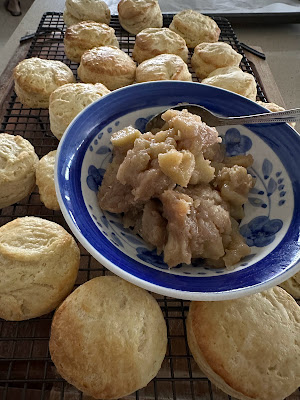For some reason, all snow skin mooncakes have a custard filling. Maybe because they are best eaten cold and red bean and green bean paste don't lend themselves well to being eaten cold. Standard method is usually to steam the dough for between 20 to 30 minutes depending on volume, and kneading till smooth then chilling in fridge for 30 mins to 2 hrs. Pan fry the dusting GRF for around 5 mins until brown.
Seems that recipes which microwave the dough requires condensed milk.
Wheat starch makes the dough more translucent and see-through. As a substitute, corn starch or tapioca starch can be used but it will be more opaque.
1. Taste of Asian Food (video)
- GRF (80g per color), rice flour, icing sugar, WS, milk, veg oil : Mostly equal parts of everything
- For coloring, uses cocoa powder, pandan juice blended with milk, and strawberry milk
- Beats batter with handheld mixer. Steam 10 mins per color (use chopstick to test it comes out clean)
- Uses clingfilm to knead and and chill 30 mins before use. Uses clingfilm to help flatten.
- Presses mold several times to imprint design
2. Cicili (video) - twelve 50g mooncakes
- GRF (75g), rice flour, WS, icing sugar, milk, veg oil.
- Dough to filling ratio is 1:1 so for 50g mold, 25g dough to 25g filling. Freezes filling for 30 mins to make it easier to handle
- Dust mold with icing sugar.
3. Honest food talks - thirty 50g mooncakes
- Can use Jap mochi rather than gaofen so it is more chewy. Gao fen requires shortening but mochiko doesn't require steaming.
- Store snowskin mooncake in fridge or immediately freeze
- GRF (144g), cornstarch, icing sugar, rice flour, milk, oil
- also has other fillings: red bean, choc, green tea mung bean
4. Souped up recipes (video) - makes twelve 50g mooncakes (written recipe is Curated Kitchenware) (tried here)
- GRF (35g), rice flour, wheat starch, milk, icing powder, condensed milk, oil
- microwave in increments totalling 3 mins (depending on power) until no more watery bits
- 20g dough + 30g filling
- uses parchment. Roll dough in between parchment with rolling pin to make skin evenly thin with thinner edges. Roll out to 2 inch diameter.
- toast 2 tbsp GRF
- Gives very detailed instructions how to shape for the mould
5. Red House Spice (video) - makes eight 50g mooncakes
- 3 tbsp GRC, flour, WS (can replace with tapioca or cornstarch to make it gluten free), powdered sugar, condensed milk, milk, oil
- 2 tbsp GRF for dusting
- Microwave 4 mins on high or steam 30 mins on med heat.
- Store in fridge and consume within 3 days.
6. Woks of life - make eight 100g or sixteen 50g mooncakes (tried here)
- 50g GRF, rice flour, wheat starch, milk, oil, icing sugar
- knead then chill in fridge 1-2 hours.
- 1:1 ratio dough to filling.
- Also uses clingfilm and rolling pin.
- For 100g mooncake, roll out to 10cm (4 inch)
7. Omnivore's Cookbook - custard filling - makes 20 mooncakes of 50g each
- 120g GRF and same rice flour, cornstarch, icing sugar, milk, veg oil
- dust mold with cornstarch
- Push mold and hold for 30 seconds to form shape
8. WTTC - Pandan snow mochi mooncake (video) - ten 50g mooncakes (adapts recipe from Kitchen 101)
- GRF/mochiko, milk, rice flour, wheat starch or cornstarch.
- Avoids using clingfilm cos of condensation. Handle when cool enough with oiled hands or use KA.
9. Emily Lu (video) - twenty 50g mooncakes
- 160g Gao Fen (aka fried GRF by Cock brand), icing sugar, water, shortening.
- Knead until smooth. No further cooking!!!!
- Demonstrates tie-dye dough
10. Kat Kwa - Rose skin, Choc skin with choc truffle filling, Durian filling
- Uses plain flour rather than rice flour with gao fen then no steaming required. Instead, she fries the flour and wheat starch to cook it.
- Uses KC to beat.
11. Lisa's kitchen - lotus seed filling
- includes recipes for other fillings: Taro & sweet potato, chestnut, red bean, mung bean, red date, lotus seed, chocolate, custard
- Also shows how to prepare salted egg yolk: mist with strong liquid, put on baking sheet and bake at 170 deg C for 8 - 10 mins.
12. DessertFirstGirl - Custard with custard powder and egg - twenty 50g mooncakes (tried here)
- 90g GRF, rice flour, wheat starch, milk
- Chill 3 hrs
13. ChinaSichuan - Custard with custard powder and egg - sixteen 50g mooncakes
- 45g GRF, rice flour, wheat starch, milk/coconut milk
- Chill 4 hrs




















